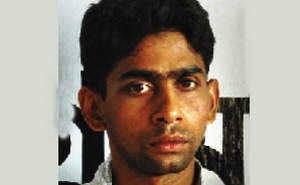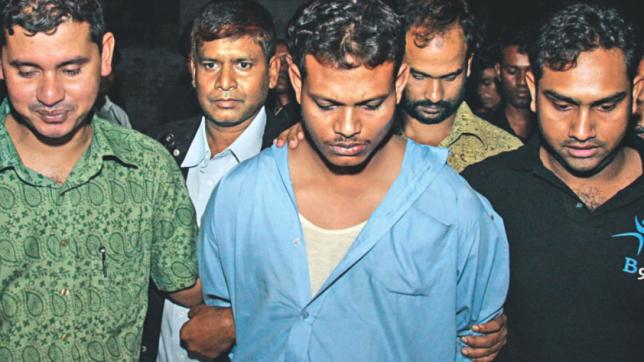Colombo, May 26 (newsin.asia): The suspected involvement of the Jamaat- ul-Mujahideen India (JMI) in the April 21 multiple suicide bombings in Sri Lanka may have made India ban the outfit last Thursday.
As reported in the India Today website on April 23, the Sri Lankan State Minister of Defense, Ruwan Wijewardene, had said that the Jamaat-ul-Mujahideen India (JMI), a unit of the Jamaat- ul-Mujahideen Bangladesh (JMB), might have had a role in the Eastern Sunday bombings which claimed over 500 lives.
It may also be recalled that the Sri Lankan Army Commander, Lt.Gen.Mahesh Senanayake, had said that the leader of the Lankan suicide bombing squad, Mohammad Zahran, had visited Bengaluru and Kerala besides Kashmir “ either for training or to link up with other groups.”
On May 26, the Press Trust of India reported from Thiruvananthapuram in Kerala, quoting the police, that the Kerala coast has been put on high alert following intelligence reports that boats allegedly carrying 15 Islamic State terrorists had set off from Sri Lanka to the Lakshadweep islands.
After the serial bomb blasts in Sri Lanka, Kerala was on alert, especially after the National Intelligence Agency (NIA) revealed that IS operatives had planned attacks in the State. Intelligence agencies believe that a considerable number of Keralites are still with the ISIS
Bengaluru and Kerala in South India had become JMI hubs after the Indian agencies and the police started getting the upper hand in West Bengal and Bihar where the JMB/JMI was entrenched earlier.
The JMI/JMB’s ace bomb maker “Boma Mizan” was living in Bengaluru incognito, and was arrested in Ramanagara in Bengaluru in August 2018. Mizan had also been a regular visitor to Malappuram district in Kerala which is Muslim-dominated. He was hoping to recruit youngsters from there.
Ban Announced
On Thursday, the government of India banned the Jamaat-ul-Mujahideen Bangladesh (JMB) and its offshoots like Jamaat-ul-Mujahideen India or Jamaat-ul-Mujahideen Hindustan.
A gazette notification dated May 23 said that these organizations have “committed acts of terrorism, promoted acts of terrorism and have been engaged in radicalization and recruitment of youths for terrorist activities in India.”
Although the activities of the JMB and JMI had been under the scanner in India, especially since 2014, the April 21 Lankan bombings brought the focus back on to these outfits.
Activities of JMB/JMI
In 2018, Hindustan Times reported that Bangladesh’s most wanted terror duo, Salahuddin Ahmad alias Salehin and Jahidul Islam alias Boma Mizan had set up the JMI, the “India chapter” of the JMB, after the latter came under tremendous pressure from the Bangladesh government headed by Sheikh Hasina.
In an article in “Terrorism Monitor Volume” date June 29, 2018, Animesh Roul (www.refworld.org) says that on January 19, 2018, a low intensity blast on the grounds of the Tibetan Buddhist monastery in Bodh Gaya in Bihar, caused panic among devotees of the Dalai Lama who had just left after a visit to the holiest of Buddhist shrines. To everybody’s horror, two improvised explosive devices were subsequently found near the monastery’s Kaalachakra (Wheel of Time) prayer ground.
Investigations revealed the stamp of JMB and JMI. The National Investigation Agency (NIA) of India and the Kolkata Police Special Task Force (STF) believed that the JMB-JMI group was planning to avenge the atrocities against Rohingya Muslims in neighbouring Myanmar, by targeting Buddhist pilgrims in India.
Bodh Gaya and the Dalai Lama were to be the high profile targets which would give these groups and their cause, worldwide attention.

In February 2018, the Special Task Force (STF) of the West Bengal police arrested six persons from the Murshidabad and Darjeeling districts with suspected JMB links. Two of them, Azhar Hossain and Shish Mohammad, had allegedly planted the explosives in Bodh Gaya. The arrest of the duo led to the seizure of 200 kilograms of ammonium nitrate, 50 detonators, timers and tiffin boxes (metal lunchboxes) that were to be used to make IEDs.
The arrest of Paigambar Shaikh and Jamirul Shaikh confirmed that Salahuddin Ahmed alias Salehin and Jahidul Islam, known as “Boma Mizan” for his expertise in bomb making, had set up the Jamaat-ul-Mujahideen India (JMI). They also said that the Bangladeshi Salahuddin, alias Salehin, is the chief of JMI.
While Salahudeen alias Salehin is still absconding, Boma Mizan was arrested in August 2018 in Bengaluru.He was trying to recruit Muslim youth from the Malappuram district of Kerala which has a large Muslim population.
JMB Active In India Since 2014
However the JMB as such had been active in India since 2014. According to the NIA, it was responsible for the blast in Khagragarh in West Bengal’s Burdwan district in December 2014.
According to Animesh Roul, Salehin had been a senior JMB leader since 2001. He was in charge of the Sylhet-Mymensingh region in Bangladesh, but had fled to India after escaping from a prison van with Boma Mizan in 2014.
Salehin had been sentenced to death for his role in the Mymensingh court bombing in 2007; the targeting several Christian youths in Jamalpur and the killings of Hridoy Roy, a Christian evangelist, in April 2003, and Joseph Gani Gomez Mandal in September 2004.
Salehin had started his radical career with Bangladesh Jamaat-e-Islami’s student wing, Islami Chhatra Shibir (ICS). He joined JMB while studying in Tejgaon Polytechnic Institute in Dhaka, radicalized by JMB’s military chief Ataur Rahman Sunny.
Salehin was arrested by the Rapid Action Battalion (RAB) of Bangladesh in April 2006 in Pahartoli in Chittagong. Boma Mizan, who was arrested by the Bangladesh police in May 2009, came to be noticed after the all-Bangladesh serial bombings carried out by the JMB on August 17, 2005. He had played a major role in making more than 500 bomb attacks across Bangladesh that killed and injured more than a hundred people.
Link With Rohingyas
Dhaka’s The Daily Star reported in 2009 that Boma Mizan had received explosives training from the Rohingya Solidarity Organization (RSO), an insurgent group that is fighting the cause of Rohingya Muslims against atrocities by Buddhists in Myanmar.
“The long-standing operational links with the Rohingya group might be the reason for the JMB’ s targeting Buddhist places of pilgrimage like Bodh Gaya,” Animesh Roul opines.
Why JMB Shifted to India and Founded JMI
According to Roul, the JMB’s shifting to India could be due to factors: The first of course, was the relentless anti-terror campaign of the Hasina regime in Bangladesh and the second was a split in the organization in Bangladesh.
Some JMB members were pro-al Qaeda while others were pro-Islamic State. The JMI, founded by Salehin, has been pro-al-Qaeda.
Salehin had attempted to reinvigorate the old JMB by using popular online publishing platforms like WordPress and Justpaste as well as social media channels such as YouTube, to post their propaganda. In mid-July 2017, the Bengali-language JMB organ Sahm al-Hind published an interview with Salehin that gave details about future activities and the objectives of his new group JMI.
However, the remnants of the JMB left behind in Bangladesh re-named themselves as “New JMB” and carried out stunning attacks like the one on the plush restaurant Holey Artisan Bakery in Gulshan, Dhaka on July 1, 2016 in which 20 patrons including 18 foreigners were killed by machete-wielding educated young Islamic radicals.
Animesh Roul points out that Salahin had outlined the JMI’s three main objectives, which are: proselytization, training and armed combat “with a view to establishing Islamic rule across the Indian subcontinent.”
The JMI’s goal is to oust “unbelievers” in the “land of Allah” by force of arms.
“He urged Muslims of the region to wage the mythical Ghazwa tul Hind (battle between infidels and believers in India) to establish a caliphate in the Indian subcontinent,” Roul points out.
How JMB Infiltrated Into India
The JMB was able to infiltrate into India because of the porous India-Banladesh border in West Bengal and Assam and the presence of fellow Bengali speaking Muslims in the border areas.
“West Bengal and Assam have substantial Muslim populations, with mosques and madrassah networks that have allowed Bangladesh-based militant groups like JMB and Harkat ul-Jihad Islami (HuJI) to raise money, material and manpower,” Roul says.
“West Bengal’s North 24-Parganas, Murshidabad, Malda and Nadia disricts and Assam’s Nalbari district remain major hotspots for Bangladeshi militants and have become a stronghold of JMB over the years,” he adds.
(The featured image at the top shows JMB/JMI bomb-making expert Boma Mizan held by NIA in Ramanagara Bengaluru in August 2018)



























































